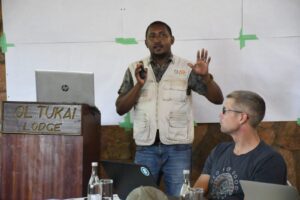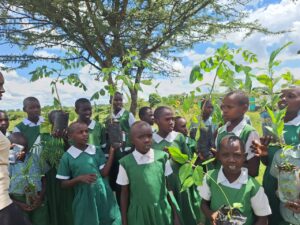December was incredibly wet in the Mara and most days large downpours occurred. Though making travel around the Mara difficult for MEP ranger teams, we did start to see longer strands of grass inside the core areas of the conservancies which is fantastic for the long grass grazers, including elephants. We also witnessed an increase in elephant numbers near MEP HQ.
MEP Monthly Report December 2019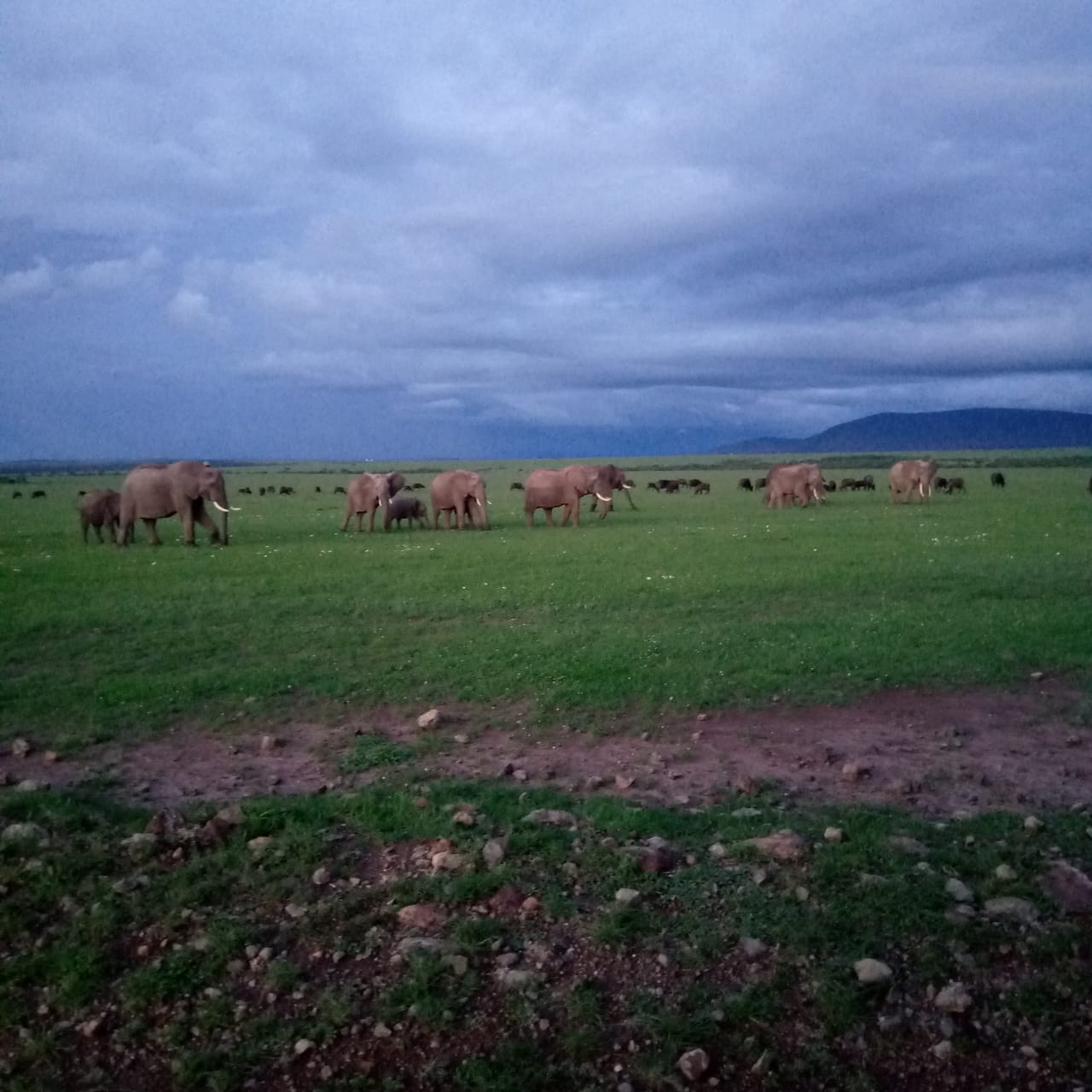
Elephants in Lemek Conservancy enjoying the rain.
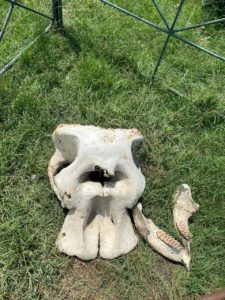 We must start the December Report with the announcement of the passing of one of our oldest collared elephants, Hugo, on December 5. Although a tremendous loss, the reward for our conservation efforts is Hugo was able to live to an old age spent in peace and pass away from natural causes rather than at the hands of malicious poachers. Hugo was a large bull elephant estimated to be over 50 years old and was the longest continually tracked bull elephant in the Mara ecosystem. MEP rangers noted that Hugo’s health had been declining in the past months and they were keeping a close eye on him for any signs of injury. MEP Data & Reporting Manager Wilson Sairowua received an immobility alert on December 5, which led MEP rangers to the scene. Ultimately, though sad, we are very comforted in knowing he passed at an age that is appropriate for large bull elephants and was able to live his long and healthy life out in the Mara. We were able to recover Hugo’s skull (pictured left) to keep as an educational tool at MEP HQ.
We must start the December Report with the announcement of the passing of one of our oldest collared elephants, Hugo, on December 5. Although a tremendous loss, the reward for our conservation efforts is Hugo was able to live to an old age spent in peace and pass away from natural causes rather than at the hands of malicious poachers. Hugo was a large bull elephant estimated to be over 50 years old and was the longest continually tracked bull elephant in the Mara ecosystem. MEP rangers noted that Hugo’s health had been declining in the past months and they were keeping a close eye on him for any signs of injury. MEP Data & Reporting Manager Wilson Sairowua received an immobility alert on December 5, which led MEP rangers to the scene. Ultimately, though sad, we are very comforted in knowing he passed at an age that is appropriate for large bull elephants and was able to live his long and healthy life out in the Mara. We were able to recover Hugo’s skull (pictured left) to keep as an educational tool at MEP HQ.
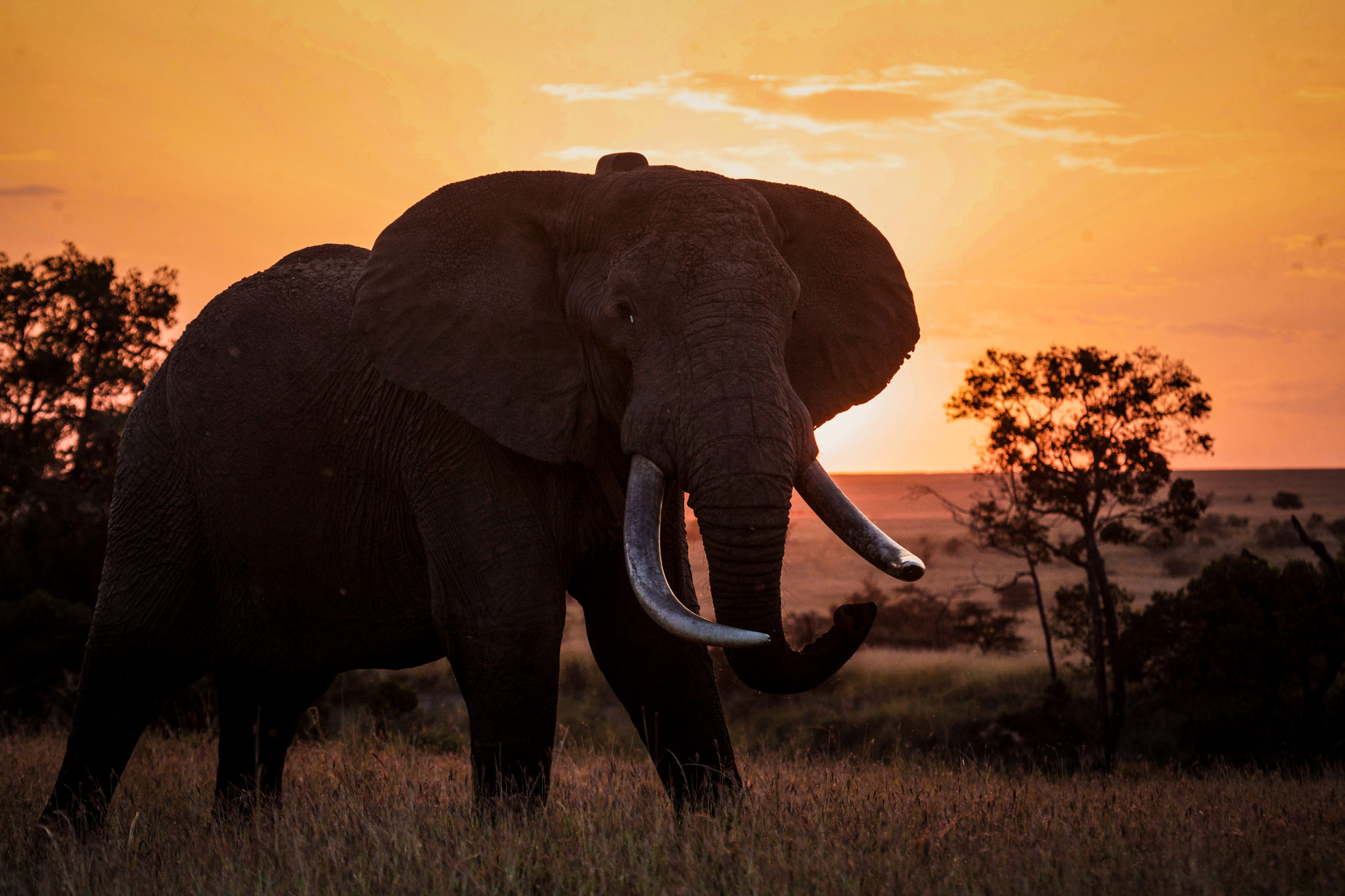
MEP collared elephant Hugo.
 MEP has been focusing on habitat protection during the low conflict season, 10 incidents in December, and the Situation Report reflects this. Overall, in December, MEP rangers confiscated 2,000 illegal posts, 10 pieces of podo, 1,575 pieces of cedar, arrested 12 suspects for illegal logging or charcoaling, destroyed 84 kilns and 81 bags of charcoal and removed three snares. This exemplifies the need for more protection in the Mara so we’re happy to report that the 14 new recruits from Loita and the second Sheldrick Wildlife Trust Mau De-Snaring Unit (pictured left) completed their basic tactical training at MEP HQ. The recruits all passed their training exercise and they were deployed on the 22nd of December. With the teams in Loita and Mau we are able to cover more area and we can expect an increase in protection of all wildlife and habitats in their new areas of operations. In addition to more boots on the ground, on December 19, MEP met with KWS, Narok County Government the District Commissioner (Narok), NEMA and the Kenya Forest Service to discuss the deforestation happening in Nyakweri Forest. We have agreed to follow up with a barasa in January to discuss performing joint patrols with MEP, KWS and KFS.
MEP has been focusing on habitat protection during the low conflict season, 10 incidents in December, and the Situation Report reflects this. Overall, in December, MEP rangers confiscated 2,000 illegal posts, 10 pieces of podo, 1,575 pieces of cedar, arrested 12 suspects for illegal logging or charcoaling, destroyed 84 kilns and 81 bags of charcoal and removed three snares. This exemplifies the need for more protection in the Mara so we’re happy to report that the 14 new recruits from Loita and the second Sheldrick Wildlife Trust Mau De-Snaring Unit (pictured left) completed their basic tactical training at MEP HQ. The recruits all passed their training exercise and they were deployed on the 22nd of December. With the teams in Loita and Mau we are able to cover more area and we can expect an increase in protection of all wildlife and habitats in their new areas of operations. In addition to more boots on the ground, on December 19, MEP met with KWS, Narok County Government the District Commissioner (Narok), NEMA and the Kenya Forest Service to discuss the deforestation happening in Nyakweri Forest. We have agreed to follow up with a barasa in January to discuss performing joint patrols with MEP, KWS and KFS.
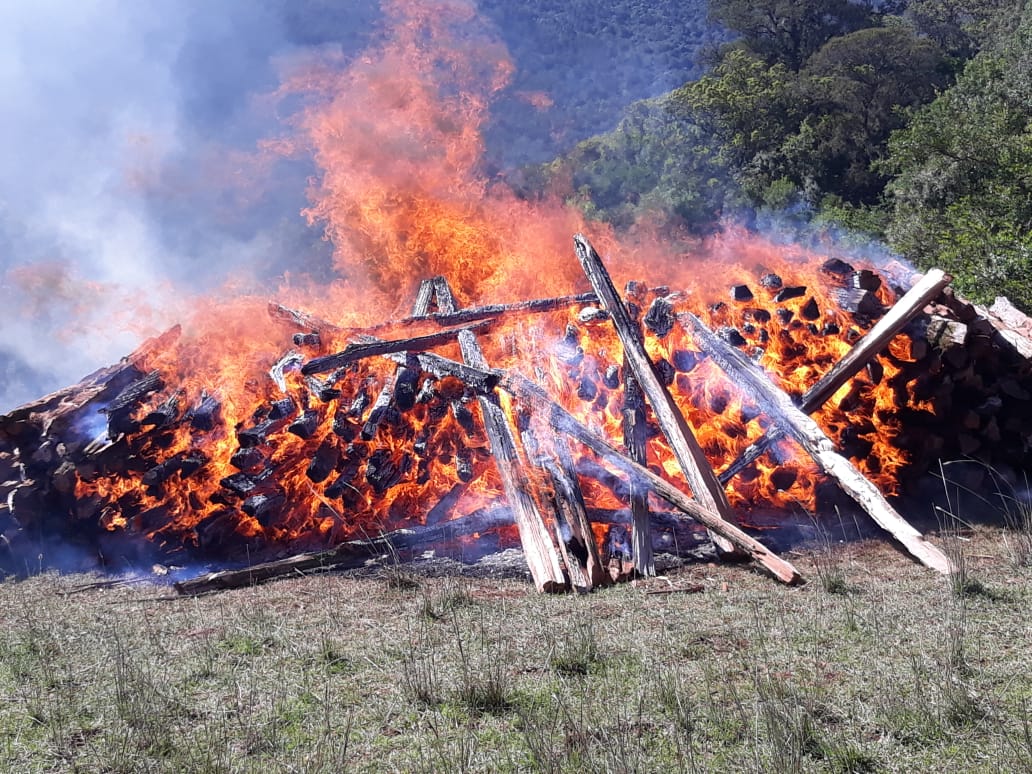
The posts recovered in Loita being destroyed.
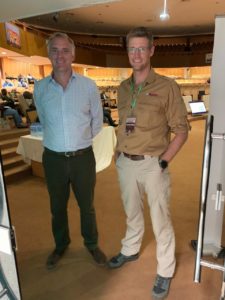 Speaking of increased protection, Mara Elephant Project would like to extend our sincerest thanks to Olarro Conservancy for supporting the purchase of five satellite elephant collars in December. We are looking forward to deploying these collars in 2020 and working together with Olarro to protect elephants in this ecosystem. Olarro has been instrumental in mitigating conflict around their conservancy and protecting elephants in the Siana area and it’s wonderful to have such a committed partner. On the 3rd to the 6th of December, MEP’s Director of Research and Conservation Dr. Jake Wall and CEO Marc Goss (pictured right) attended the 12th Annual Wildlife Research Conference in Arusha, Tanzania. It was very interesting to hear about all of the research projects across the country and we also had a chance to catch up with our partners across the border at Tanzania Wildlife Research Institute (TAWIRI).
Speaking of increased protection, Mara Elephant Project would like to extend our sincerest thanks to Olarro Conservancy for supporting the purchase of five satellite elephant collars in December. We are looking forward to deploying these collars in 2020 and working together with Olarro to protect elephants in this ecosystem. Olarro has been instrumental in mitigating conflict around their conservancy and protecting elephants in the Siana area and it’s wonderful to have such a committed partner. On the 3rd to the 6th of December, MEP’s Director of Research and Conservation Dr. Jake Wall and CEO Marc Goss (pictured right) attended the 12th Annual Wildlife Research Conference in Arusha, Tanzania. It was very interesting to hear about all of the research projects across the country and we also had a chance to catch up with our partners across the border at Tanzania Wildlife Research Institute (TAWIRI).
On the 10th of January, CEO Marc Goss had the privilege of visiting the Reteti Elephant Orphanage in Namunyak Conservancy in Northern Kenya. It was an impressive facility and they had a quite a few orphaned elephants as a result of their mother’s dying from human-elephant conflict. Another notable helicopter operation in December was putting a collar on a lion in Nakuru with Kenya Wildlife Service. The lion was caught in a trap in Eldoret after preying on livestock there. There have not been any lions in Eldoret recorded since the 1950s. No one knows how it got to Eldoret but when it was caught, he was taken to Nakuru National Park where we collared and released him on the 11th.

The lion being transported to safety.
December is a keystone fundraising month for Mara Elephant Project and with the late Giving Tuesday, December 3, this year, we really had to capitalize on a short holiday giving season to make the most of everything. Thank you to Nicholas Lapham, the JE Fehsenfeld Family Foundation, the Bliss Family Foundation, and an anonymous donor for their very generous donations. We also received grants from the Sidekick Foundation, Angama Foundation, Taronga Conservation Society and Föreningen Försvara Elefanterna. Finally, thank you to Lynda and Tricia for raising money for MEP via Facebook Fundraisers and to all of the 33 donors who supported MEP on Facebook in December. We’d also like to than SAWA for their continued support of MEP. Thank you to all of those mentioned and the many more individuals and organizations that supported us in December and through 2019.
MEP CEO Marc Goss had this to say about 2019:
“When reflecting on what we have accomplished this year I am honored to say that the organization has come a long way. This year Dr. Jake Wall came on board in January to direct the conservation and research department; we took delivery of the new Karen Blixen Camp Trust helicopter in June; started a second Sheldrick Wildlife Trust team in the Mau Forest; started a new team in the Loita Forest with the support of Lori Price and the Elephant Crisis Fund; purchased two new vehicles; built on our already strong partnerships and made new partners in the Mara, Shimba Hills and Tanzania; collared new elephants in the Rift Valley, Nairobi, Mau, Kerio Valley, Nyakweri Forest, and replaced collars in the Mara. All of this has been made possible by our supporters, our dedicated staff and key partners. Thank you to everyone who made all this possible and I look forward to a an even more effective project for elephant protection in 2020.”
